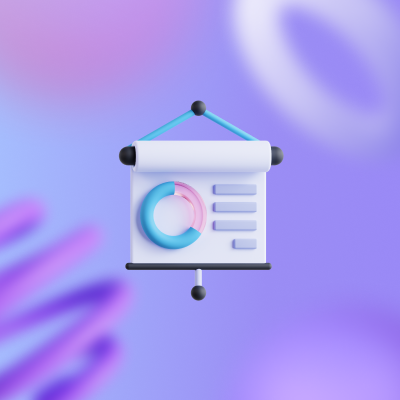
You take on managing your organisation’s L&D unit just as the decision to migrate learning at work to an LMS. You’re charged with setting up the system and designing all the tools and quirks of the new system. Management, everyone at work is looking to you to bring this to life and herald the change in the course of your organisation. No pressure!
I can’t tell you how it will go, but I can introduce you to ten authoring tools you can use to design and deliver content as you take on this challenge.
Content
- What Is an eLearning authoring tool?
- Why do you need an authoring tool?
- Features of authoring tools
- Ease of use
- Collaboration
- Templates
- Adaptability
- Criteria for evaluating the best eLearning authoring tools
- Scale
- Speed & Efficiency
- Quality
- Top 10 eLearning authoring tools
- Adapt
- Adobe Captivate
- Agylia
- Articulate Storyline
- Elucidat
- Evolve
- Go
- Lectora
- Nimble
- Znanja
- My Learning Hub
- Conclusion
What is an eLearning authoring tool?
Software used to create and modify digital content is usually referred to as authoring tools. Content in this context can be any type of information communicated via media to inform, educate, or express information. They enable users to create media to achieve an intended purpose.
As far as learning is concerned, authoring tools are used to create eLearning content and training materials used on LMS platforms. Whether you are coaching employees on leadership skills, teaching them how to use a new technique or educating your partners on the efficient use of your product, content is what you use to get it done on your LMS.
Why do you need an authoring tool?
The need for learning in the workplace has spiralled like a whirlwind. There’s always something new to learn in the workplace, especially as innovations are spun out frequently, especially regarding technology.
Authoring tools enable L&D teams to produce and amend learning materials in different content forms to enable dissemination, understanding and access to learning using LMS. They allow you to organise this content into courses and modules that deliver learning objectives. Because the content can be of different types, authoring tools ensure that learning is rich and not just boring text that’s difficult to understand or remember.
As attention spans decrease, authoring tools allow you to adjust training materials to deliver better engagement and relevance to the learning audience.
Features of authoring tools
Certain essential features are especially important when deciding on the authoring tools you need. They include…
Ease of use
There is no point spending so much on software if you can’t use it or find it challenging to use. Your authoring tool must make the creation of materials easy and smooth. Simplicity and seamlessness are considerations when ease is considered. User experience or user-friendliness is a top priority in making this decision, as the idea of adopting an LMS in the first place is to make learning easy and accessible. Inadvertently, course creation should also be easy since it feeds into the learning process.
Collaboration
Your authoring tools should make for easy collaboration as course content may be produced by individuals other than your L&D team. Several individuals may even come together to create components of individual courses, and your software should provide this. Additionally, it should facilitate your controls, such as reviews and approvals of courses created.
Templates
Some authoring tools offer templates, which are helpful for beginners to get going with course creation either to use straightaway or to adapt as guides for creating new courses. Examples are a great way to learn how things work or how they can be presented. In-built templates make your authoring tool valuable and usable by users of varying experience levels.
Adaptability
The more flexible an authoring tool is, in terms of the types of content it can create, the more attractive it should be to you. Software tools with more functions, accessible on multiple devices, are more appealing than those which restrict use to desktops or browsers. The more multifunctional the software, the more likely your L&D team will find it useful and effective.
Criteria for evaluating the best eLearning authoring tools
There are three primary criteria for deciding on the best authoring tool for your organisation.
Scale
You want to be sure that the authoring tool accommodates editing, re-purposing and scaling your content and allows sharing of content. Transferring content via imports and exports and translating them are other ways that scale is considered. Your authoring tool should not restrict this.
Speed & Efficiency
You often have to produce content very fast, especially with ongoing innovation. So, you need a creative tool that can be quickly used, fast-tracks production and strengthens collaboration. It should make your team more productive overall and function seamlessly.
Quality
The richness of the content delivered, and its quality must not be compromised by the authoring tool used. Your tool should give you options matching the output quality you require. Pictures, sound quality, and legibility should not be compromised. In addition, content should be customised to suit your changing needs and learning audiences.
Top 10 eLearning authoring tools
Here are the top ten authoring tools that I promised earlier.
Adapt
Technical authors will appreciate this creative tool for designing bespoke HTMLs through back-end design as it is the leading authoring tool for producing responsive, multi-device eLearning. It can be used across all devices and has an intuitive interface which can be used by developers and non-programmer content creators, too. It’s compatible with SCORM and now features a choice of plugins that can extend its capabilities. Best of all its features, it’s free.
Adobe Captivate
This multi-feature content creation tool is particularly appealing because of its synergy with other Adobe tools. Storyboarding courses at the design stage comes in helpful with this tool along with other features such as simulations, high-definition demos, transitions and triggers. This keeps your content engaging. Another plus is its PowerPoint integration which accelerates course creation seamlessly. Adobe Captivate uses fluid boxes to create fully responsive content, even from legacy materials. Simply put, it helps experienced authors create high-quality content. It features over 75,000 free assets and costs £25.28 monthly.
Agylia
Agylia’s authoring module is designed for the large-scale creation of high-quality and engaging HTML5-based e-learning content. Agylia supports both SCORM 1.2 and xAPI (TinCan) standards. It is easy to use and supports a wide range of device types, including tablets. Agylia’s ‘occasionally connected’ architecture enables authors to work both online and offline, anywhere and anytime. Agylia supports media, including images, videos and audio, and interactions such as image pop-ups, walkthroughs, click tables and games. It features built-in support for knowledge checks and randomised assessments to help learners monitor their progress. Pricing is negotiable.
Articulate Storyline
This modern flagship authoring tool of Articulate is also known as Storyline 360 and is a part of the Articulate 360 package. It’s fresh and highly adaptable to PowerPoint users but with exciting extra features. Once you get to know it, it rewards you with high-quality content that makes up for its quirks. A wide range of interactive materials can be created through web browser access to the tool. The beautiful thing about it is that it requires tweaking to adjust content to different devices; graphic designers and art directors will appreciate this. Another plus is the extensive pool of stock images that it holds. Popular in the instructional design sphere, Storyline’s advanced features, such as triggers and layers, provide creators with the flexibility required to produce rich, quality customised content. It is available two ways, via subscription to Storyline 360 or a one-off purchase of Storyline 3. Subscription prices start at $999 per user annually.
Elucidat
This cloud-based eLearning authoring tool is another high-quality content tool that makes creating easy and has an extensive portfolio and powerful translation tools for content localisation. It’s user-friendly and embedded with templates that can guide authors in creation. Interactivity features such as gamification, social polling, layout designer, flip cards, mobile responsive editor and branding options make it comprehensive in the variety it provides you. Content is fully responsive on all devices and works with screen readers such as JAWs, adhering to a very high level of accessibility standards, including the US Section 508, without having to create separate course versions. Elucidat promotes team collaboration, features role-based permissions and helps you reduce the cost of business-critical training. It’s SCORM-compliant and is said to work with any modern LMS. To get a quote, you’d have to contact them directly.
Evolve
If you’d like to collaborate often and have the time to get to know your tools, then Evolve is for you. Built for teams, Evolve uses a responsive design to create intuitive HTML3 eLearning content that is versatile – works on various platforms, systems and devices. It saves you time as it equally has templates you can build on to create what suits your needs. It also facilitates interactivity with flip cards, videos, carousels, flow charts, sliders and even question interactions which effectively test learning and can be equipped with reward extensions. Evolve promotes scale and makes branding straightforward. Its compatibility with SCORM and xAPI (or TinCan) is a great plus, so you don’t have to worry about falling behind on eLearning standards. It also integrates well with Moodle and other LMS solutions. It’s priced at £24 monthly per user.
Gomo
One other cloud-based authoring tool is Gomo, which enables the creation of web-style content and remote collaboration. With web or app access, it provides the flexibility that desktop apps lack, though this limits the degree of customisation possible. With modern and easy-to-tweak themes, it hosts a selection of interactive templates that all sit within a two-column structure. Quick-start wizards and built-in templates, scalability and collaboration, and its accommodation of multi-lingual courses are other attractions of Gomo. Additionally, its drag and drop functionality makes it easy for non-programmers to use once they understand how it works. Gomo provides different options when designing assessments, such as the Likert scale, drop-down list, and graphical multiple choice. Kinks, such as countdown timers, carousels and zoomable images, also make for engaging content. One drawback is that it doesn’t have a video or audio editor of its own. Pricing of this “mobile-first” software starts from $178 monthly.
Lectora
Lectora isn’t just one tool; It’s a whole suite of authoring tools. Lectora is composed of a cloud-based version and a Windows desktop version. Though the older version, Lectora Inspire, has long been in use, the cloud-based version, Lectora online, is relatively new. It’s yet another tool which uses a responsive design and is accessible on all devices though it has a steeper learning curve than others. Inadvertently, it is best suited for experienced eLearning designers. Lectora is SCORM compliant and integrates with other tools like Snagit and Camtasia, which make screen recordings, voiceovers and image editing much simpler. With Lectora Online, you can produce customised, highly interactive content and solutions. Lectora is quite particular about being WCAG – complaint (Web content accessibility guidelines compliant), ensuring that users with hearing and vision disabilities can use it. Its templates have built-in navigation, interactive samples, page layouts and instructions for use. Customisation is limitless on Lectora as it supports CSS, fonts, custom libraries and scripts favoured by experienced developers. Features include autoplay so that media play automatically when a page is opened to simplify the delivery of narrated or video content and anchoring objects to a location on a page so that they stay there even when users scroll. This is especially useful in mobile content to anchor logos, headers/footers, navigation controls, images and videos. Each tool has its own price.
Nimble
Nimble®Author is aimed at the easy creation of engaging e-learning courses with no need for technical knowledge or training. The user-friendly interface allows rapid course authoring based on a sound instructional framework. It requires no installation or download as it is cloud-based and provides web access for course creation. Courses can be built collaboratively and published to SCORM 1.2, in seconds for playback on desktop and mobile devices. Developers can brand courses with corporate colour schemes and logos, and a royalty-free image library is available. Pick up the Nimble®Author at £850 plus VAT.
Znanja
Znanja offers powerful authoring tools that range from an intuitive, simple-to-use interface for novices to advanced tools for experts. You have the option to program javascript, CSS and HTML. An entire library of CSS animations can be applied without any programming knowledge so that anyone can create courses with animation and movement. Znanja offers full branding for your courses, which are fully responsive to run on all devices. Its price starts at £99 per month.
My Learning Hub
My Learning Hub is a cloud-based suite of learning tools that allows you to create, distribute, track and recommend the knowledge your employees, partners and customers need to grow. My Learning Hub’s software suite combines a course builder, an internal learning management system (LMS), and a public-facing customer education platform (Hubs). My Learning Hub’s course builder is easy-to-use and at the same time versatile in function, which works for both beginners and expert designers. SCORM-compliant and interoperable with any LMS, My Learning Hub’s authoring tool also offers beautiful white-labelled templates and themes that are ready to use. Another advantage of My Learning Hub is an extensive library of JSON animations that makes your learning materials on-brand, interactive and engaging. Create interactive learning content, export in one click, and facilitate learning at your company. L&D, Training, HR & Talent Management professionals and team leaders across industries choose My Learning Hub for our design-first approach, smooth user experience, scalable pricing and dedicated customer support.
Conclusion
This is by no means an exhaustive list of authoring tools. However, these provide you with good places to start as you approach setting up or modifying the content in your organisation’s LMS. The table below provides an overview of these tools and their key features and limitations.
Book a free demo to find out more about how you can use My Learning Hub’s authoring tools and other LMS services and products.














